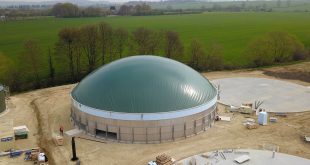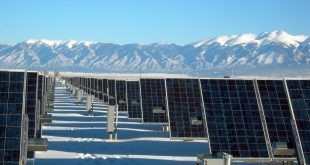It seems like about three million of you have asked me to explain how a geothermal system works. Well, maybe not three million, but it’s a bunch of you and I’m honored that I have the opportunity to do it. Now you’ve probably already figured out that I’m not smart enough to be real technical, but I do have some common sense. So I will use a common-sense approach to explain how the most efficient heating and cooling system available today can help you.
Actually you could get the Oct. 25, 1948, issue of Life magazine and get a great explanation. That’s correct, 1948. Geothermal units are not new, but it has only been in recent years that they’ve gained in popularity. It just takes awhile for adults to embrace new ideas, especially if they cost more money. Notice that I said adults. When I show high school students how you can spend $50 more per month on installing a geothermal unit and save $75 per month on your utility bill, they simply say “cool.” No discussion or argument. They would take it in a minute.
OK, OK – here’s how it works. All energy comes from the sun. Mr. Sunshine has provided a lot of BTUs for a lot of years and Mother Earth has absorbed and stored that energy. A closed-loop geothermal system simply removes those BTUs from Mother Earth in the winter and gives them back in the summer.
At depths of five feet or more, the earth temperature remains close to 57 degrees, as evidenced by a cave’s temperature. This temperature varies only slightly across the United States.
There are two basic ways to install a geothermal unit. If digging a trench is difficult or if space is limited, geothermal contractors drill holes into the ground vertically to install small-diameter polyethylene pipe. If digging a horizontal trench is feasible, the pipe is installed in a horizontal trench.
A very small pump then circulates water from the earth to the geothermal unit and back to the ground in the closed-loop pipe. Actually, geothermal is not the best name for this unit. A better name is ground-coupled heat pump or water-to-air heat pump. As you learned in my last newsletter, a heat pump doesn’t create heat, it just moves heat from one location to another using a compressor. Example: A window air conditioner blows cool air inside and hot air outside. If you turn the air conditioner around, it will blow hot air inside and cool air outside.
As it circulates 57-degree water in the winter, the geothermal unit, using the compressor to remove heat from the water, provides 105-degree air into the house. As the water goes back to the ground loop, it immediately starts absorbing BTUs from the earth.
In the summer, a reversing valve simply reverses the process and the compressor pumps BTUs into the ground loop.
The water returns to the earth and immediately starts cooling off again. It’s all about heat transfer. Here’s another example — a blacksmith heats a horseshoe to red hot. To cool it, he doesn’t wave the horseshoe into the air. Instead, he simply dips it in water. It cools off a lot faster and takes a lot less energy.
I have been responsible for the installation of thousands of geothermal units and I have had no disappointed customers. My wife and I have had geothermal heating and cooling for 18 years and we simply would not have any other system.
Geothermal gives good hot air in the winter and really cold air in the summer and uses less energy than any other central heating and cooling system. So don’t be a tightwad. Buy the best there is – you, your family, and your house deserve it.
 Alternative Energy HQ solar power for homes, wind energy, and bio fuel issues
Alternative Energy HQ solar power for homes, wind energy, and bio fuel issues








